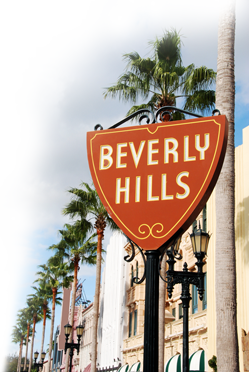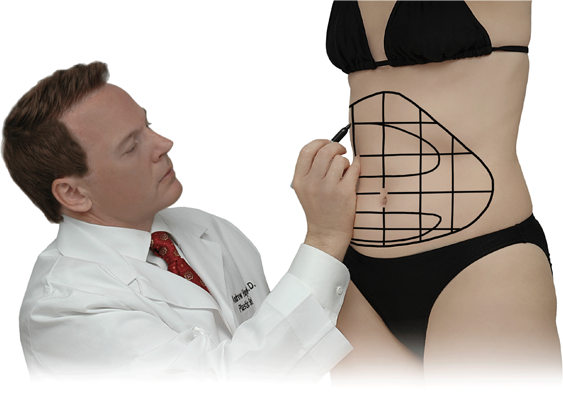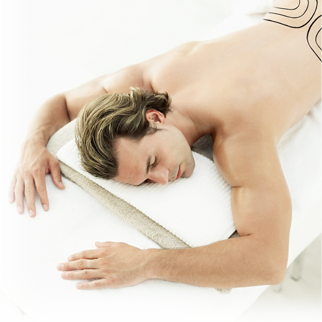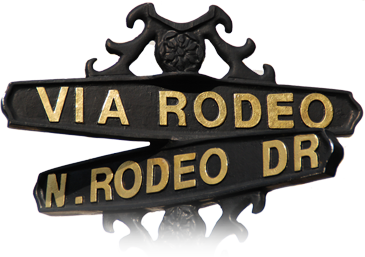NON SURGICAL FAT REDUCTION
Frequently and aggressively marketed as “non-invasive” or “non-surgical” approaches to fat reduction, these methods are most commonly performed by non plastic surgeons (such as gynecologists, family physicians, general practitioners, retired emergency room doctors, etc) who likely took a short instructional course sponsored by the manufacturer of the machine. Many times these physicians are trying to simply increase cash flow to their practice by adding some type of “fat reduction treatment” to their services even though cosmetic procedures are totally unrelated to the actual field (specialty) they were formally trained in.
These non-liposuction fat reduction methods usually lure in patients with a relatively low up front cost (for the first treatment) and claims of “non-invasiveness” and “safety”. Frequently there are also claims of “no down time” which is very appealing to the consumer. What potential clients frequently fail to understand, however, is that the effectiveness of the actual procedure is usually highly questionable. Even if it is relatively cheap, is it really a good deal if the effectiveness of the treatment is minimal or extremely poor? As far as the aggressive marketing claims made by the manufactures (and by the physicians who are trying to advertise their newly purchased machines), astute consumers might be correct to sometimes think “If it sounds too good to be true, it’s probably not true.”
Consumers should definitely not consider an “FDA” stamp on any of these devices as a guarantee of device effectiveness. The FDA is an agency that basically conducts a risk-benefit analysis that allows an item to be marketed for particular indications – sometimes requiring little or no testing. The vast majority of devices that undergo FDA review are moderate-risk Class 2 devices such as medication pumps, some surgical lasers and fat reduction devices. Many are granted FDA clearance through a controversial process called 510(k). (Low-risk Class 1 devices, like stethoscopes and gauze, are exempt from review.) Products get FDA 510(k) clearance if they’re found to be “substantially equivalent” to a legally marketed device, meaning they have the same intended use and technological characteristics — or, if not, that the differences don’t raise serious concern. There’s no requirement of actual clinical testing to determine the safety and effectiveness of 510(k) submissions, though the FDA does ask for clinical data in only about 10 percent of cases (according to a Chicago Tribune article). Unfortunately, consumers immediately assume that an “FDA” stamp on a device means that the device is very effective and works extremely well. Obviously, this is simply not true. Consumers should not fall for this marketing tactic.
Some consumer advocates also worry that insufficient FDA testing in the FDA 510(k) system lets unsafe or ineffective products slip through. As the chain of “substantially equivalent” devices grows, the less likely it is the new ones bear any resemblance to the original, and usually there’s been no evaluation of safety or effectiveness in between, said Dr. Michael Carome, deputy director of the Health Research Group at Public Citizen, a nonprofit consumer rights group. Devices later found faulty or even recalled aren’t automatically removed from the list, Carome said, so new products could be cleared based on tainted precedents.
Another marketing tactic is to present data from a “research study” that claims effectiveness. Physicians were formally trained in medical school on how to analyze a “research study” and how to determine if the results from a research study are truly meaningful. The general public, however, is not trained on how to actually analyze a scientific research study. One important consideration when reviewing any “research study” is to look at who actually funded the research study in the first place. Their is a huge conflict of interest if the study was funded (and the researchers were directly paid) by the same company that basically showed effectiveness of their machine in the study. In addition, was the study actually published in a peer reviewed respected medical journal, such as the famous plastic surgery journal known as Plastic and Reconstructive Surgery? If a study makes it to actual publication in this level of a medical journal, be assured that the study was actually reviewed by a committee of professional reviewers before it was allowed to be published. Many studies are rejected after review by this committee if the methods used in the study were poor or questionable. There are, however, many less respectable journals, magazines and even websites that would easily allow publication of any research study that may have been rejected elsewhere.
One common thread to these non-liposuction approaches seems to be that the unwanted fat itself is not actually suctioned out of the patient. Surprisingly, the fat is not physically removed at any time during the treatment. Most of these approaches are marketed as somehow causing the fat to be magically “absorbed” or “eliminated” by the body without the need to actually physically remove the fat. These approaches generally cost less than liposuction (liposculpture) per individual treatment (for the first treatment) – however – multiple repeat treatments on the same exact area (with additional fees for each treatment) are frequently required with some of these approaches, and hence ultimately the final cost per problematic area may sometimes be just as much as real liposuction (liposclupture) for that same area. Although some modest results may occasionally be seen (varies by machine/technique used), most board certified plastic surgeons would likely agree that the final results are simply not equivalent to those seen with true liposuction (liposculpture) performed by a formally trained plastic surgeon. The core reason is possibly because the unwanted fat is not actually physically removed from the patient, but rather left to somehow be reabsorbed (claims are frequently made that the fat subsequently disappears over time on its own).
LIST OF NON SURGICAL FAT REDUCTION METHODS
COOLSCULPTING

According to the manufacturer, this technique claims to work by cooling down fat cells and then allowing fat to somehow be eliminated without actually being physically suctioned out of the patient. CoolSculpting supposedly delivers controlled cooling to target the fat cells underneath the skin. The treated fat cells are said to then become crystallized (frozen), then die. Over time (months), your body supposedly eliminates these dead fat cells on its own. Multiple repeat procedures are involved. The manufacturer aggressively advertises Coolsculpting as being “FDA cleared”, which in reality is not a absolute guarantee of actual effectiveness of this technique. Physicians marketing this device sometimes falsely use the incorrect term “FDA approved” in their advertisements for Coolsculpting, instead of the proper words “FDA cleared”. Most board certified plastic surgeons would likely agree that the results of this non liposuction approach are inferior to liposuction (liposculpture).
ZELTIQ

Also claims to use cooling to destroy fat cells. This is a competitor to Coolsculpting.
ULTRASHAPE

The UltraShape System is marketed as a body shaping device that uses pulsed, focused ultrasound to mechanically (non-thermally) and selectively destroy fat cells at a designated focal point in the subcutaneous fat tissue without effecting the skin, blood vessels, nerves or connective tissue. Complete treatment protocol requires a few months – 3 treatments at two-week intervals. The unwanted fat is not actually suctioned out of the patient. Most board certified plastic surgeons would likely agree that the results of this non liposuction approach are inferior to liposuction (liposculpture).
VELASHAPE

Vacuum and specially designed rollers for mechanical massage of the skin facilitate heat energy delivery. The net result supposedly increases the metabolism of stored energy, increases lymphatic drainage and claims to reduce or shrink the size of the actual fat cells and fat chambers. The company claims that by a combination of bi-polar radiofrequency (RF) and infrared (IR) technology, in conjunction with vacuum-and mechanically-powered tissue manipulation, the VelaShape somehow raises the temperature of fatty tissue Most board certified plastic surgeons would likely agree that the results of this non liposuction approach are inferior to liposuction (liposculpture).
ZERONA

Zerona is a low-level laser device developed by Erchonia Corp. for non-invasive body slimming of the waist, hips, and thighs. It claims to disrupt the fat cell membranes causing the release of stored lipids and fatty material, in turn, promoting fat cell collapse. The device was first introduced to the market in 2008 as an off-label use device for slimming. Zerona laser treatments are generally a series of 6 treatments over a 2 week period by a laser overlying the body areas you want reduced. Most board certified plastic surgeons would likely agree that the results of this non liposuction approach are inferior to liposuction (liposculpture).
LIPOSONIX

Ultrasound energy is focused on targeted fat. The fat is not physically suctioned out at all. Liposonix claims that the treated fat tissue is removed supposedly through “the body’s natural healing and elimination process.” Most board certified plastic surgeons would likely agree that the results of this non liposuction approach are inferior to liposuction (liposculpture).
VANQUISH

Another gimmicky procedure that claims to deliver radio frequency energy into fat tissue by focusing radio frequency energy into fat layers, while restricting the delivery of high heat elsewhere. No suction of fat is involved. The fat supposedly goes away on its own. Most board certified plastic surgeons would likely agree that the results of this non liposuction approach are inferior to liposuction (liposculpture).
Lipo Dissolve

Lipodissolve treatment involves a drug mixture directly injected into the body. These shots are meant to somehow dissolve or melt away body fat without surgery. Also known as injection lipolysis, Flab Jab, Lipozap, Lipotherapy, and Mesotherapy. Lipodissolve requires shots over a number of sessions The Lipodissolve procedure is not approved by the FDA. In fact, The FDA has warned consumers about the safety and marketing claims associated with some of these injection techniques. As with other “non-surgical” approaches to fat reduction, no actual suction of fat from the body is performed.
Please take the time to read this warning letter regarding this injection based fat reduction method from the FDA.

FDA Warns About
Lipodissolve Product Claims
It’s a tempting premise: Get a series of drug injections and see pockets of fat on your body go away for good.
But the Food and Drug Administration (FDA) is alerting consumers about false and misleading claims being made about products used in lipodissolve, and about other
misbranding of these products.
Recipients of lipodissolve get a series of drug injections intended to dissolve and permanently remove small pockets of fat from various parts of the body. The process is also known as injection lipolysis, lipozap, lipotherapy, and mesotherapy.
“We are concerned that these com-
panies are misleading consumers,”
says Janet Woodcock, M.D., director
of FDA’s Center for Drug Evaluation
and Research. “It is important for
anyone who is considering this vol-
untary procedure to understand that
the products used to perform lipodis-
solve procedures are not approved by
FDA has not approved any products for
use in lipodissolve. It also has received
reports of unexpected side effects—
including permanent scarring and
skin deformation—in people who’ve
undergone the lipodissolve procedure.

1 / FDA Consumer Health Infor mat ion / U. S. Food and Dr ug Administration
APR IL 2010
“It is important for anyone who is considering
this voluntary procedure to understand that the
products used to perform lipodissolve procedures
are not approved by FDA for fat removal.”
FDA for fat removal.”
The drugs most regularly used in
the lipodissolve injection regimen are
phosphatidylcholine and deoxycho-
late (commonly called PC and DC,
respectively). Other ingredients may
also be used, including drugs or com-
ponents of other products such as vita-
mins, minerals, and herbal extracts.
What Consumers Should Know
FDA is alerting consumers that-
- It has not evaluated or approved
products for use in lipodissolve. - It is not aware of evidence
supporting the effectiveness of the
substances used in lipodissolve for
fat elimination - The safety of these substances,
when used alone or in
combination, is unknown - It is not aware of clinical studies
to support medical uses of lipodissolve
In addition, FDA has reports of unex-
pected side effects in people who’ve
undergone the lipodissolve proce-
dure. These side effects include
- Permanent scarring
- Skin deformation
- Deep, painful knots under the skin
in areas where the lipodissolve
treatments were injected.
FDA Actions
On April 7, 2010, FDA announced it
had sent warning letters to six medi-
cal spas in the United States—and a
cyber letter to a company in Brazil—
for making false or misleading state-
ments on their Web sites about drugs
used in the procedure, or for otherwise misbranding lipodissolve products. (Cyber letters are letters sent to
companies whose U.S. online sales of
products may be illegal.)
The U.S. medical spas receiving
warning letters make various unsup-
ported claims about lipodissolve,
such as assertions that the products used in lipodissolve
- are safe and effective
- have an outstanding safety record
- are superior to other fat-loss
procedures, including liposuction.
Additionally some of the letters
indicate that the companies have
made claims that lipodissolve can
be used to treat certain medical con-
ditions, such as male breast enlarge-
ment, benign fatty growths known
as lipomas, excess fat deposits and
surgical deformities.
The U.S. companies receiving warn-
ing letters in regard to lipodissolve
products are
- Monarch Med Spa, King of
Prussia, Pa. - Spa 35, Boise, Idaho
- Medical Cosmetic Enhancements,
- Chevy Chase, Md.
- Innovative Directions in Health,
Edina, Minn. - PURE Med Spa, Boca Raton, Fla.
- All About You Med Spa,
Madison, Ind.
FDA is requesting a written response
from these U.S. companies within 15
business days of receipt of the letters
stating how they will correct these vio-
lations and prevent similar violations
in the future. These firms were told
that failure to promptly correct the
violations may result in legal action.
The Brazilian firm getting a warn
ing letter markets lipodissolve prod
ucts on two Web sites: zipmed.net
and mesoone.com. FDA will notify
regulatory authorities in Brazil of
this action.
The agency has issued animport alert against the zipmed.netand mesoone.com entities to prevent the importation and distribution of unapproved lipodissolve drug products into the United States. Importing and distributing unapproved drug products is a violation of the Federal Food, Drug, and Cosmetic Act.
How to Report Side Effects
Consumers and health care professionals may report serious side effects with the use of lipodissolve products to FDA’s MedWatch Adverse Event Reporting Program either online, by regular mail, by fax, or by phone.
- online: www.accessdata.fda.gov/scripts/ medwatch/medwatch-online.htm
- by regular mail: Use postage-paid,
- pre-addressed FDA form 35004,
- available online at www.accessdata.
- fda.gov/scripts/medwatch/
- by Fax: (800) FDA-0178
- by phone: (800) FDA-1088
Find this and other ConsumerUpdates at-
www.fda.gov/ForConsumers/ConsumerUpdates
www.fda.gov/consumer/consumerenews.html
1 / FDA Consumer Health Infor mat ion / U. S. Food and Dr ug Administration
APR IL 2010
CHOOSING A PHYSICIAN YOU CAN TRUST
Since liposuction (liposculpture) and other fat reduction techniques are not covered by health insurance, many physicians from different specialties will try to capture you as a liposuction (or fat reduction procedure) client. It is likely that liposuction is the number one procedure that has more “non-plastic surgeons” trying to perform it compared to any other cosmetic procedure in the USA. For this reason, consumers should be very meticulous when researching liposuction (fat reduction) procedure physicians. If you research and actually dig into the credentials of the physician advertising for your liposuction or fat reduction procedure, you may be amazed at what you will find. We feel that the first and most important recommendation is selecting a formally trained PLASTIC SURGEON who is board certified by the American Board of Plastic Surgery (ABPS).
If you find a true board certified plastic surgeon (ABPS certified) or other physician who seems to offer many techniques marketed as “non-surgical” or “minimally invasive” approaches to fat reduction, you may be smart to wonder if they are doing so just to simply get more clients in the door. Perhaps they market these “flavor of the month” procedures regardless of the actual effectiveness of these “non-surgical” procedures. Some may use the tactic of saying they offer “all” the fat reduction procedures available or “more choices” than any other physician in the geographic area. We believe that should be a cautionary red flag to consumers as well. Just because a certain fat reduction method is currently aggressively marketed (seen on many magazine ads, billboards, television commercials, TV talk shows, internet searches, etc) does not mean that it is the most effective or modern technique available. In reality, it may actually not be very effective at all. In fact, if you wait about 18 months, you will probably see a new slick advertising campaign for a new method of fat reduction (usually with a new catchy name) take over as the dominant advertised technique. All of a sudden, the once massively advertised technique that you once thought was the ultimate answer to fat reduction will no longer be seen or heard about at all in any advertisements or media source. It likely lost its popularity because its effectiveness (in the real world) proved to be very poor. The cycle continues and consumers should be aware of this mass media marketing cycle for gimmicky fat reduction procedures.
Another point to consider is that if you are not seeing a true plastic surgeon for your fat reduction issues, then you may simply be offered a given procedure (treatment) whether or not you are actually a good candidate for it. For example, a female with multiple children (stretched abdomen) and loose hanging abdominal skin is likely a great candidate for a tummy tuck (abdominoplasty) rather than liposuction or any other gimmicky fat reduction procedure. If that particular client goes to a physician who cannot perform a tummy tuck (since that physician is actually not a plastic surgeon), unfortunately, they will likely be offered whatever machines or techniques the physician has available to them in their office. This is unfortunately a common way that clients lose (waste) thousands of dollars with little or no improvement whatsoever in their original problem area.
Although it is hard to believe, in the state of California, your surgeon does not need to be a formally trained plastic surgeon or board certified by the ABPS in order to perform liposuction or fat reduction procedures. Board certification is simply not mandated. Any licensed medical doctor (M.D.) or Doctor of Osteopathy (D.O.) from any specialty can legally perform liposuction or fat reduction procedures as long as the patient signs the consent form for the procedure. The physician may actually be a gynecologist, family doctor, retired emergency room physician, general practitioner, radiologist etc. It is left up to the patient to actually double check if their surgeon is actually board certified by the ABPS by visiting www.abplsurg.org and clicking/tapping on the “is your surgeon certified” tab. It is very easy to be confused by other official sounding boards and certifications posted on ads and websites.
To find out if your potential surgeon holds any board certification (formally recognized by the American Board of Medical Specialties) in any specialty whatsoever, we suggest you visit www.certificationmatters.org and discover which SPECIFIC board certification (if any) your potential surgeon actually holds. We highly suggest that you choose a surgeon board certified by The American Board of Plastic Surgery if you are thinking of having PLASTIC SURGERY on your body – it only makes sense. Visiting www.certificationmatters.org is also a way to find out which specific specialty your potential surgeon was truly trained in – rather than relying upon slick ads with confusing phrases that may indirectly (and falsely) suggest certification in plastic surgery.
Once you are assured that your potential plastic surgeon meets this very important standard of formal training in plastic surgery, then you can determine if they are truly the right physician based on your own personal consultation with the doctor and a careful review of the doctor’s past results. Take your time, do your own research (do not rely solely upon flashy advertising or upon your friend’s research) and make your choice wisely. If patients are diligently researching a procedure to help improve their unsightly bulges of problematic fat, it would be wise to also spend a equal amount of time researching the actual physician’s credentials offering the procedure. When researching liposuction (liposculpture), physician credentials, and other alternative fat reduction techniques – it is truly a jungle out there. Take your time and choose wisely.
Zerona, Zeltiq, Liposonix, Vanquish, Ultrashape | Cathedral City | Coachella | Desert Hot Springs | Indian Wells | Indio | La Quinta | Palm Desert | Palm Springs| Rancho Mirage | Los Angeles | Beverly Hills













